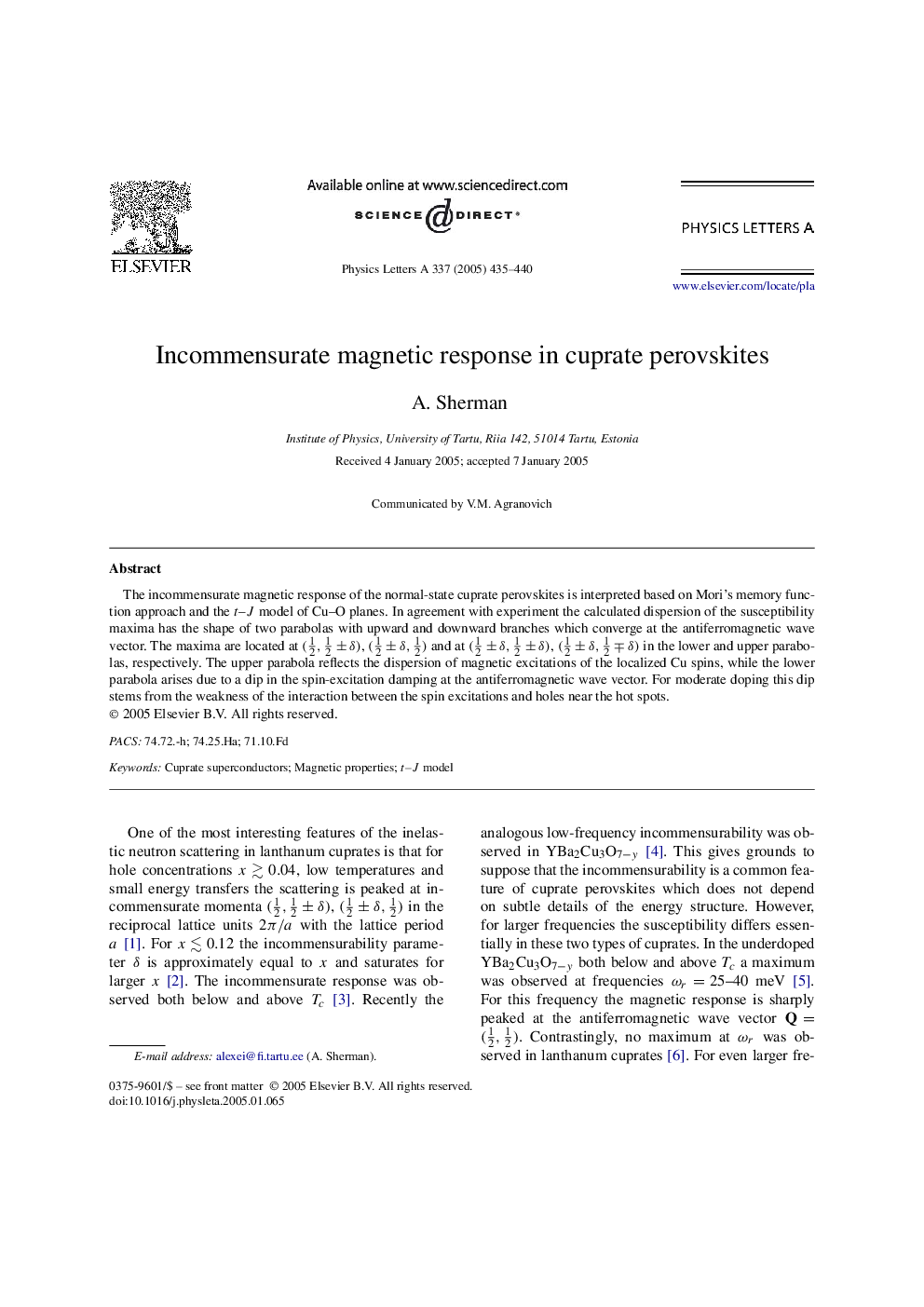| Article ID | Journal | Published Year | Pages | File Type |
|---|---|---|---|---|
| 9868304 | Physics Letters A | 2005 | 6 Pages |
Abstract
The incommensurate magnetic response of the normal-state cuprate perovskites is interpreted based on Mori's memory function approach and the t-J model of Cu-O planes. In agreement with experiment the calculated dispersion of the susceptibility maxima has the shape of two parabolas with upward and downward branches which converge at the antiferromagnetic wave vector. The maxima are located at (12,12±δ), (12±δ,12) and at (12±δ,12±δ), (12±δ,12âδ) in the lower and upper parabolas, respectively. The upper parabola reflects the dispersion of magnetic excitations of the localized Cu spins, while the lower parabola arises due to a dip in the spin-excitation damping at the antiferromagnetic wave vector. For moderate doping this dip stems from the weakness of the interaction between the spin excitations and holes near the hot spots.
Related Topics
Physical Sciences and Engineering
Physics and Astronomy
Physics and Astronomy (General)
Authors
A. Sherman,
